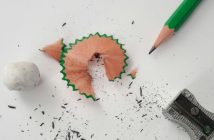
There are six education systems that we looked at in this year’s School Choice Guide. The fifth system is Montessori. Find out why the Kirkwood Family decided to pick this system. Read about the first system, Advanced Placement Courses and SAT/PSAT here; the second, the Chinese National Curriculum here; the third, the English National Curriculum here and the fourth, International Baccalaureate (IB) here.
The Montessori motto is “Help me do it by myself.” This approach is founded on the belief that every child should be respected as an individual and allowed to learn at their own pace within the prepared environment of a classroom. Montessori education fosters intelligent thinking, independence, self-esteem, problem-solving skills, and social aptitude.
Founder Dr. Maria Montessori (1870-1952) noticed that kids experienced “windows of opportunity” as they grew. She based the Montessori method on years of first-hand observations in the classroom. As the first woman to graduate from the University of Rome Medical School, Dr. Montessori brought a scientific approach to the field of education.
Who does it target?
Globally, the age of Montessori students varies widely. It runs the gamut from infancy to adulthood (0-18 years), but the majority of schools tend to focus on early childhood education. Most of the institutions in Beijing fall into the latter category, but MSB and Daystar offer Montessori education for kids up to age 12.
How is it applied?
Though there are several Montessori societies worldwide, the term “Montessori” itself is not trademarked. That is why it is crucial for parents to visit prospective schools. The more prominent societies, like the American Montessori Society (AMS), formulate their own standards and accredit schools. In Beijing, MSB is the only AMS affiliate member though other schools may have AMS-certified teachers on staff.
A typical Montessori classroom features multi-age groupings, uninterrupted blocks of work time, guided activity choices, and specially-designed learning materials. The curriculum focuses on five basic areas: practical life, sensorial, language, math, and culture. Kids progress from simple to complex tasks, all the while fulfilling their natural curiosity.
Montessori teachers guide their students rather than dictate. There are no letter grades; progress is tracked through observation, recordkeeping, and self-reflection. There is also no such thing as failure since teachers present each child with a choice of work and a variety of difficulties.
Why should parents consider it?
Education experts agree that the most important period in a child’s development is between infancy and age 6. Dr. Montessori believed that kids at this age had an “absorbent” quality, like a sponge. The idea is that the proper guidance and stimulation will allow them to form patterns for the rest of their lives. In regular daycare, the focus is often on keeping young students entertained. The Montessori classroom is designed to meet every child’s learning needs with special tools and materials. Students can set their own pace instead of being forced to do activities they do not enjoy. They become part of a community, with older kids playing the role of mentors and younger kids feeling supported for the challenges ahead.
How well does this education system prepare students for the real world?
As self-directed learners, Montessori students gain transferrable skills that can be used throughout their lives. The core values are independence, self-esteem, and cooperation. Many Montessori schools in Beijing use a combination of educational approaches. For example, the core curriculum at MSB includes aspects of Montessori, the IB Primary Years Programme and the British education system.
The Kirkwood Family (US)
Jonathan and Christy Kirkwood’s three daughters Nicola (age 10), Eleanor (7) and Cecily (5) all attend the International Montessori School of Beijing (MSB). Christy is a stay-at-home mom and Jonathan runs Kirkwood and Company, a boutique investment advisory firm.
Why did you choose the Montessori route for your daughters?
Christy: Only our youngest daughter went to MSB originally. The placement was driven by the school’s proximity to our house. After watching our youngest daughter gain Chinese language skills through MSB’s bilingual Chinese/English program, we moved our two older daughters there.
The Montessori program allows children to work at their individual levels, together and independently. Montessori is also very scientific and tactile. The teachers demonstrate the learning process physically, especially in math. I also love the small school environment at MSB; the staff is accessible, helpful, and caring.
What are the benefits of this curriculum?
Last Christmas break at a store in Florida, a Chinese woman came in but couldn’t communicate with the shopkeeper. My oldest daughter Nicola began translating for her. We were all blown away, especially the Chinese woman who started to cry with happiness. She couldn’t believe that a 10-year-old girl was visiting from Beijing and spoke Mandarin! It was a wonderful moment; I was so proud.
What are the drawbacks of this curriculum?
My major concern is transitioning back to the USA and out of an international school. We would also like to see a more robust physical education program for the kids, but most international school families seem to supplement [physical education]with outside resources or after-school activities, which MSB does offer for a fee.
Find the downloadable 2014-2015 School Choice Guide here.
Come talk to the schools offerring this curriculum at the 2014 beijingkids and JingKids Spring School Choice Fair, sponsored by RGF AIR Purifiers at the Hilton Beijing on March 1 and 2.
Photo by Ken



